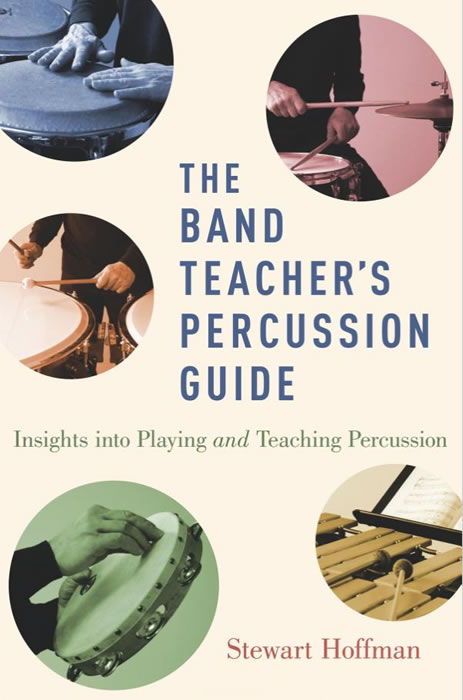Teaching Percussion Technique: 8 Essential Points for Students and Teachers to Remember
The development of good percussion technique is not often on the teacher’s or student’s mind during those first weeks or even months of classes.

The wrists should be close to the drum, flat and with the thumbs at the side.
After all, there’s nothing easier than playing a note on a snare drum, xylophone or timpani: any beginner can hold a stick or mallet above a drum head or bar, let it drop and – bam! – there it is. And with snare drum and xylophone, you don’t even have to worry about pitch or intonation!
Compare that with what the other beginning band students must learn – how to form good embouchures, proper breathing, fingerings – and its no wonder that, after a lesson on holding the sticks, percussionists are often left largely on their own for the first few weeks of classes while the other instrumentalists demand all the attention.
But, like everyone else, percussion students should focus on developing a good percussion technique from day one. If they don’t, they are far more likely to develop bad playing habits and tense, uncontrolled playing – which will cost them dearly later on when they have to play rolls, other rudiments, and more demanding music in general. And there is nothing more difficult than having to change a student’s playing once bad habits have been ingrained.
So once you’ve introduced your percussion students to a good grip, hand out the points listed below – then relentlessly remind them to follow them. Indeed, those first weeks of classes, when they are expected to play nothing more than single strokes, are an ideal time to have them focus on and absorb the points below, which apply to all percussion instruments no matter what specific grip is used.
(In The Band Teacher’s Percussion Guide: Insights into Playing and Teaching Percussion, I advocate and explain the teaching of matched grip for snare drummers– though students who exhibit good control playing with traditional grip need not change.)
So keep your students focused on developing a good percussion technique by frequently reminding them to follow the points below. Once these points are internalized, your students will play with less tension, greater control and fluidity and, ultimately, perform more musically in your band or orchestra.
8 Points for Percussionists to Focus On:
- Relax all the muscles as much as possible from the shoulder, down through the arm and into hand. Tense playing will reduce speed and may result in injury.
- Hold the stick or mallet firmly but not tightly. Squeezing the stick or mallet too tightly will create tension all the way up the arm.
- The hands and wrists should be held very close to the drum or mallet instrument. The vast majority of playing is done with the wrists about an inch or two above the rim of the drum or the keys of the xylophone (see photo above).
- Keep the wrists fairly flat, with the thumbs at the side of the stick. Playing with the thumbs on top of the sticks may result in a circular stick motion. (Some techniques that incorporate greater finger control may advocate a “thumbs up” position.)
- Do not strike the instrument from an angle. Doing so leads to playing with circular strokes, which is inefficient.
- Create an “arc” shape when lifting and dropping the stick onto the instrument. The stick should not fall from a position parallel to the instrument.
- Play louder or softer notes by dropping the stick from a higher or lower level. Don’t hammer harder into the instrument to play at a greater volume.
- Play passages evenly by lifting and dropping the stick to and from the same level above the drum or keyboard.
Keeping these points in mind – and at the top of your students’ minds – will help guide them to a relaxed technique that will serve them well for a lifetime.
As always, I welcome your comments – along with any points you would like to see added to the list.



That is interesting that you should play softer notes by reducing the distance. That makes sense considering the more energy potential will lead to louder notes. I’ll have to get a drummer who knows when to go easy on the beats.